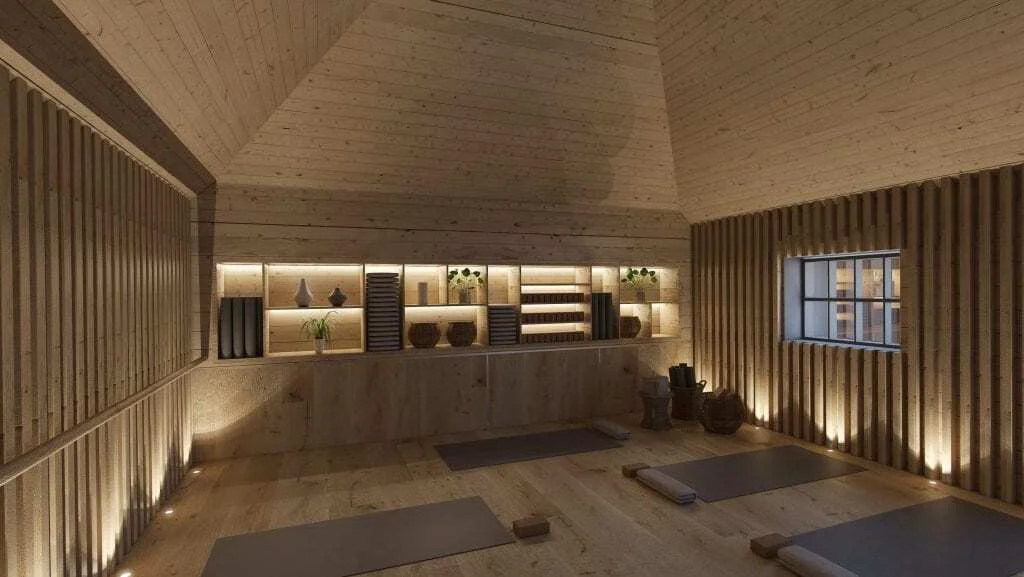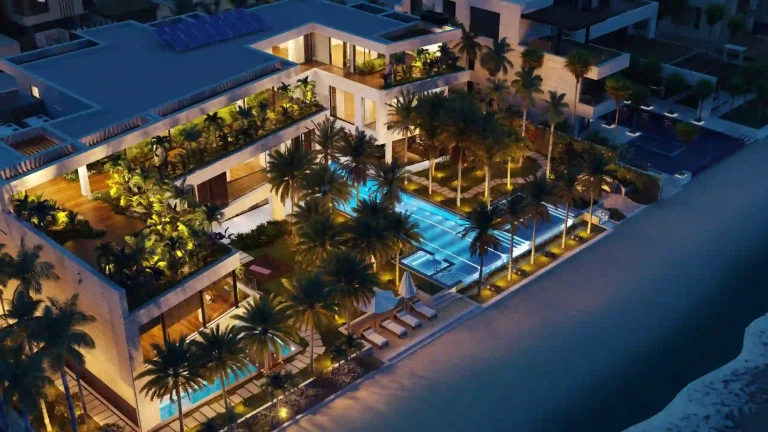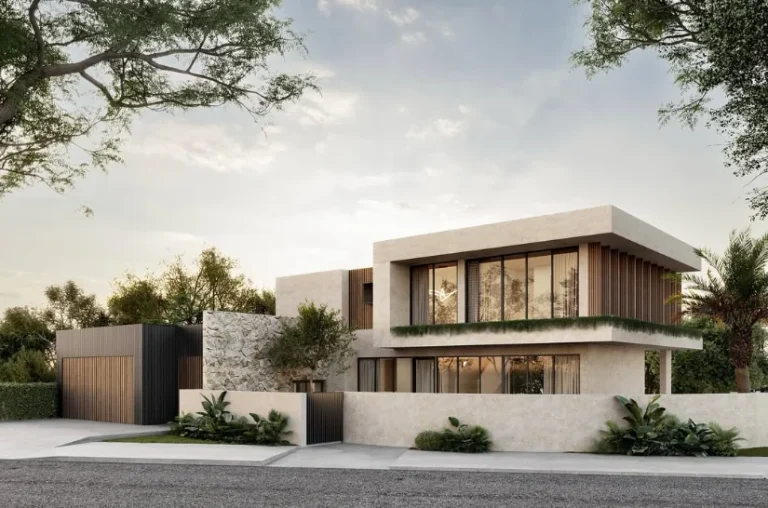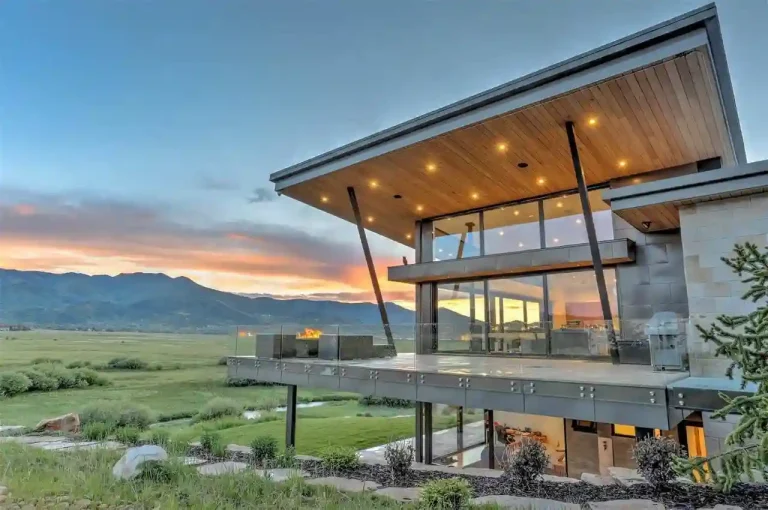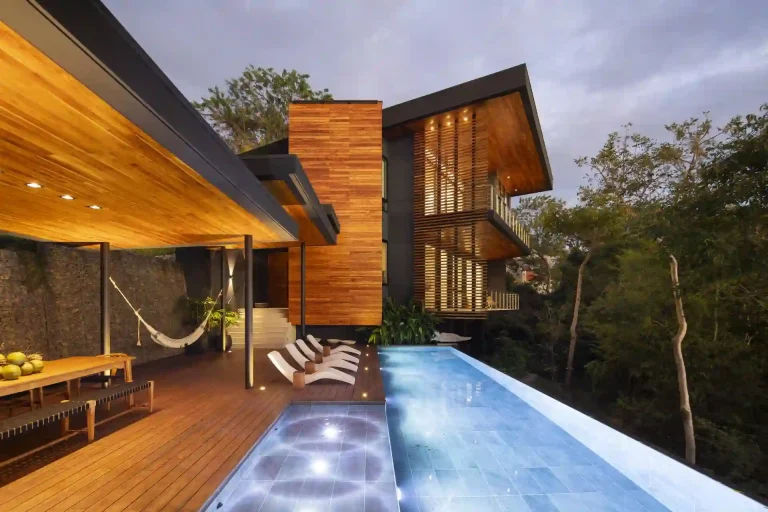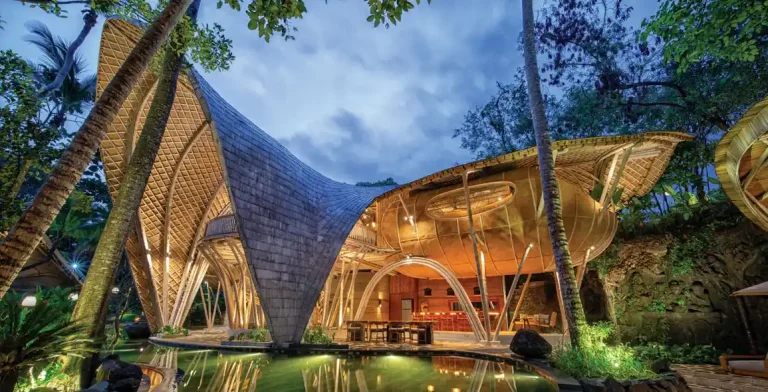Transformative Biophilic Spa & Wellness Room Design: Bring Nature Indoors
Core Principles of Biophilic Spa & Wellness Room Design
Reconnecting with Nature Through Spatial Layout
A biophilic spa or wellness room should present a subtle but strong connection to nature through layout. That means orienting rooms to light, integrating indoor-outdoor transitions (e.g., sliding glass walls to gardens or courtyards), and visual axes that draw the eye outward to plants, water features, or sky.
It also means designing “soft geometries,” curved walls, organic lines, and transitions rather than rigid boxes. These mimic forms found in nature and reduce visual stress. Biophilic spa design often uses layered spaces: for example, a reception area that leads through a plant-laced corridor to treatment rooms or relaxation niches. That layering can frame green views, water features, or textured walls to stimulate calm.
Another dimension is establishing “prospect and refuge” in the layout. People feel more at ease where they have a sense of looking outward (prospect) while feeling protected or nestled (refuge). In a wellness room, that can mean seating tucked partially behind greenery, or alcoves with translucent screens that allow soft light but maintain privacy.
Materials, Texture & Natural Elements
Materials selection is central. Biophilic spa rooms favor:
-
Natural woods (teak, cedar, bamboo, FSC-certified timber)
-
Stone and textured slate
-
Natural fibers like jute, hemp, and linen
-
Cork, bamboo, or rammed earth
-
Living walls, preserved moss, and indoor planting
-
Water elements: fountains, shallow streams, pebble beds
These materials not only evoke nature visually but also deliver tactile and acoustic benefits. For instance, stone or wood surfaces with careful detailing reduce harshness; cork or soft textiles absorb sound; living plants help regulate humidity and purify air.
Incorporating multi-sensory elements is also key: soundscapes (water trickling, wind rustling leaves), aroma (plant-based essential oils), tactile surfaces (pebble floors, natural fiber mats), and controlled lighting to simulate daylight patterns.
Lighting: Dynamic, Circadian, and Layered
A biophilic wellness room must manage light thoughtfully. Harsh artificial overhead lighting disrupts serenity. Instead, layers of light ambient, accent, and task are combined with daylight where possible. Using skylights, clerestory windows, or light wells lets the sun penetrate central zones. Where daylight is limited, circadian lighting systems that change hue and intensity across the day help maintain physiological balance.
Soft uplighting behind plant walls, indirect wall washes, and feature lighting around architectural forms can accent natural textures. In dim zones such as treatment suites or steam rooms, low-level warm lights preserve tranquility.
Air, Water & Thermal Comfort
Biophilic spaces care about microclimates. Fresh, well-circulated air is critical. Incorporating greenery and air-purifying plants or active systems helps reduce indoor pollutants (VOCs, CO₂). Humidity control should mimic natural ambient levels; too dry or too humid can disrupt comfort.
Water features (fountains, indoor shallow pools, wall waterfalls) not only provide visual and auditory cues but also help moderate humidity and ambient temperature. Thermal variation, slightly cooler zones next to warmer treatment areas, can simulate natural habitat transitions, promoting bodily engagement and relaxation.
Sound and Aroma Integration
Acoustic comfort is often overlooked. Introducing natural sound sources (water trickle, rustling leaves) or recordings of forests can mask extraneous noise. Sound-absorbing materials (cork, textile wall panels, moss walls) help.
Aromatherapy integrated into diffusers embedded in walls/plinths or via air handling systems (e.g., forest scents, citrus, herbal blends) adds another dimension to the biophilic experience. That aroma must be subtle; the goal is an immersive ambiance, not fragrance overload.
Deep Benefits of Biophilic Spa and Wellness Room Design
Psychological and Emotional Benefits
Integrating biophilic design in spa and wellness rooms has been shown to reduce stress, lower cortisol levels, and support mental clarity. By mimicking natural environments, these spaces trigger innate biophilia, our subconscious affinity for nature, promoting calm and restorative states. Clients often report deeper relaxation, enhanced mood, and more meaningful mind-body experiences.
Biophilic rooms also foster emotional safety. Soft materials, organic forms, and visual connectivity to greenery create environments where clients feel sheltered yet expansive. This supports deeper therapy or mindfulness work without the harshness of sterile clinical rooms.
Physiological and Health Benefits
Beyond mood, biophilic spa design supports physical health. Better indoor air quality (fewer VOCs, more oxygen) helps respiratory wellness. Natural light regulates circadian rhythms, improving sleep patterns after treatments. Humidity control and plant presence maintain skin and mucous membrane health. Thermal comfort zones allow bodies to adapt, boosting circulation and detoxification.
Furthermore, sensory layering (sound, touch, aroma) engages multiple senses. This multisensory input supports parasympathetic activation (rest-and-digest), which enhances recovery, lowers heart rate, and balances the autonomic nervous system.
Operational & Business Benefits
From a commercial perspective, a well-designed biophilic spa or wellness room can become a unique selling point. It elevates brand positioncommandsmmand premium pricing, and encourages repeat clientele. In a crowded wellness market, a spa that feels like a nature sanctuary gains differentiation.
From an operational standpoint, sustainable materials and energy-efficient lighting systems can reduce maintenance and energy costs. Clients may stay longer or purchase add-on services in a more appealing environment. Also, wellness-conscious design may align with certifications (e.g., WELL Building Standard) or eco-certifications, enhancing credibility.
Real-World Product Ideas for Biophilic Spa & Wellness Rooms
Below are five product ideas that work beautifully in biophilic spa and wellness room contexts. Each product is described in detail its features, benefits, use cases, and how to integrate it.
1. PAI Wellness Aroma Diffuser Wood Yoga
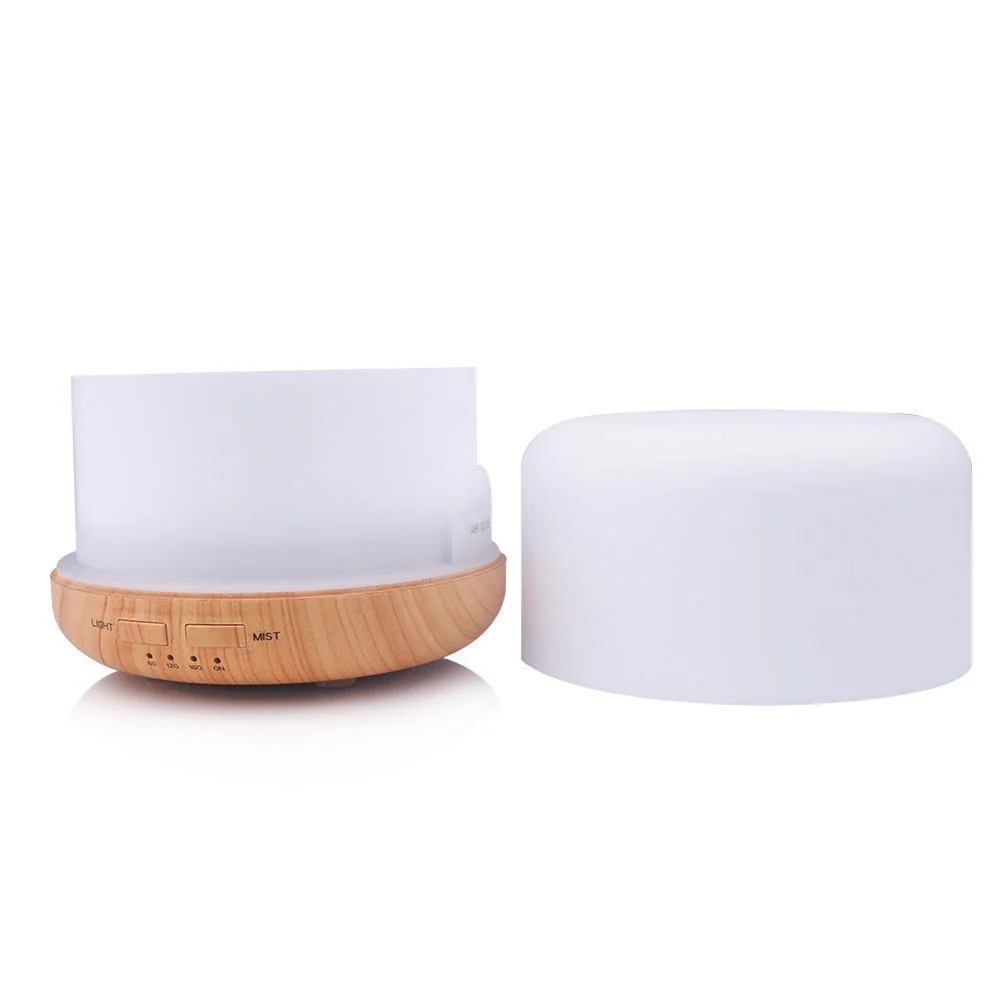
Product Overview & Features
This aroma diffuser combines fine design and functionality. Made of wood and ceramic elements, it fits naturally within a biophilic aesthetic. It supports ultrasonic misting, has adjustable mist levels, mood lighting, and a timer function.
Benefits & Use in Spa Design
Because it’s crafted from wood and ceramic, it aligns with the natural material palette. It introduces gentle scent diffusion (essential oils) into treatment or relaxation zones, subtly enhancing the ambient environment without overpowering it. The soft lighting won’t work as an accent light.
Use Case & Problem Solved
Many spa rooms lack integrated aroma systems and rely on standalone diffusers. This product solves the problem of bulky, plastic-looking aroma devices that break the visual harmony. It gives designers an elegant scent distribution system that blends in.
How to Buy & Where
You can source it from wellness equipment suppliers or online wellness shops.
Buy Now – PAI Wellness Aroma Diffuser Wood Yoga
2. Geohoney Himalayan Salt Lamp

Product Overview & Features
A Himalayan salt lamp is a chunk of pink Himalayan rock salt with a light inside. It emits a warm amber glow and is believed (by some) to ionize the surrounding air.
Benefits & Use in Spa Design
The warm, diffuse light acts as gentle ambient lighting, enhancing serenity. Visually, it blends with natural stone palettes. Though scientific claims vary, many spa-goers appreciate the aesthetic and soothing presence.
Use Case & Problem Solved
In waiting lounges, meditation zones, or low-light corners of a wellness room, this lamp provides a soft glow without relying on harsh electric lighting. It solves the challenge of creating ambient mood light that is gentle and natural-looking.
How to Buy & Where
Available from lighting, décodécorand wellness product retailers.
Buy Now – Geohoney Himalayan Salt Lamp
3. Di Palomo Ultrasonic Diffuser Tuscan Vineyard Sunset
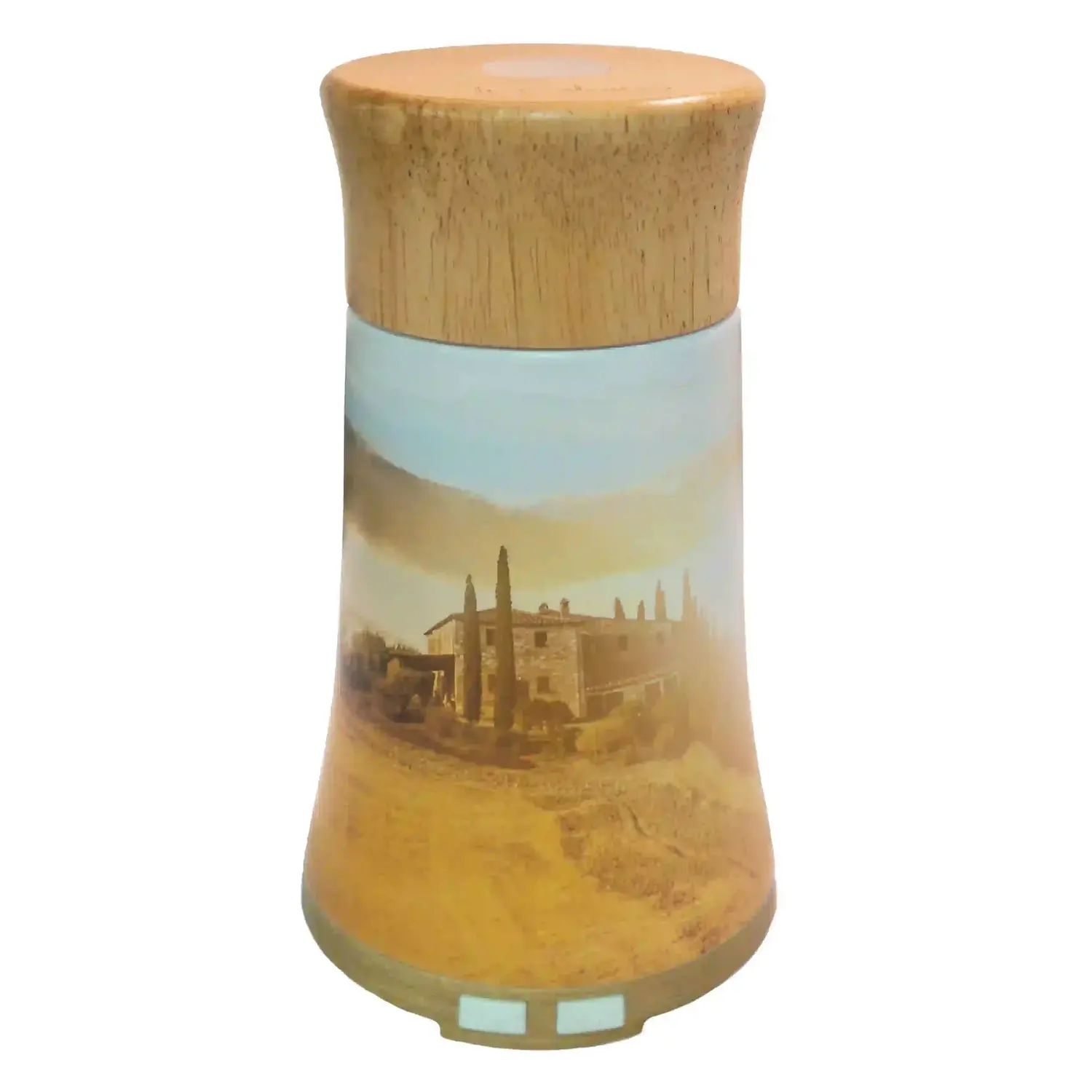
Product Overview & Features
A decorative ultrasonic diffuser blending artful form with function. Offers variable mist modes, LED mood lighting, and an elegant vessel shape.
Benefits & Use in Spa Design
It can function both as an art object and a scent diffuser. Its design acts as a focal point in lounge areas or reception zones while dispersing essential oil blends.
Use Case & Problem Solved
Many spa spaces need functional decorating pieces. This diffuser bridges utility and aesthetics, solving the tension between device use and visual harmony. It’s ideal in studios, waiting areas, or treatment rooms.
How to Buy & Where
Find it via specialty aromatherapy retailers or spa supplies outlets.
Buy Now – Di Palomo Ultrasonic Diffuser Tuscan Vineyard Sunset
4. Terpenic Diffuser Pulse

Product Overview & Features
A sleek, modern diffuser with smart features, app control, pulsed misting, and design-forward styling.
Benefits & Use in Spa Design
This product is ideal for more technical wellness rooms where the ambiance must adapt dynamically. The pulsed and timed scent release avoids oversaturation.
Use Case & Problem Solved
In multipurpose wellness spaces (yoga, meditation, lounge), scent demands can change. This diffuser solves over-fragrance issues by offering controlled pulses and app-based scheduling.
How to Buy & Where
Available from advanced wellness tech vendors or spa technology distributors.
Buy Now – Terpenic Diffuser Pulse
5. Soapstone Oil Aroma Diffuser
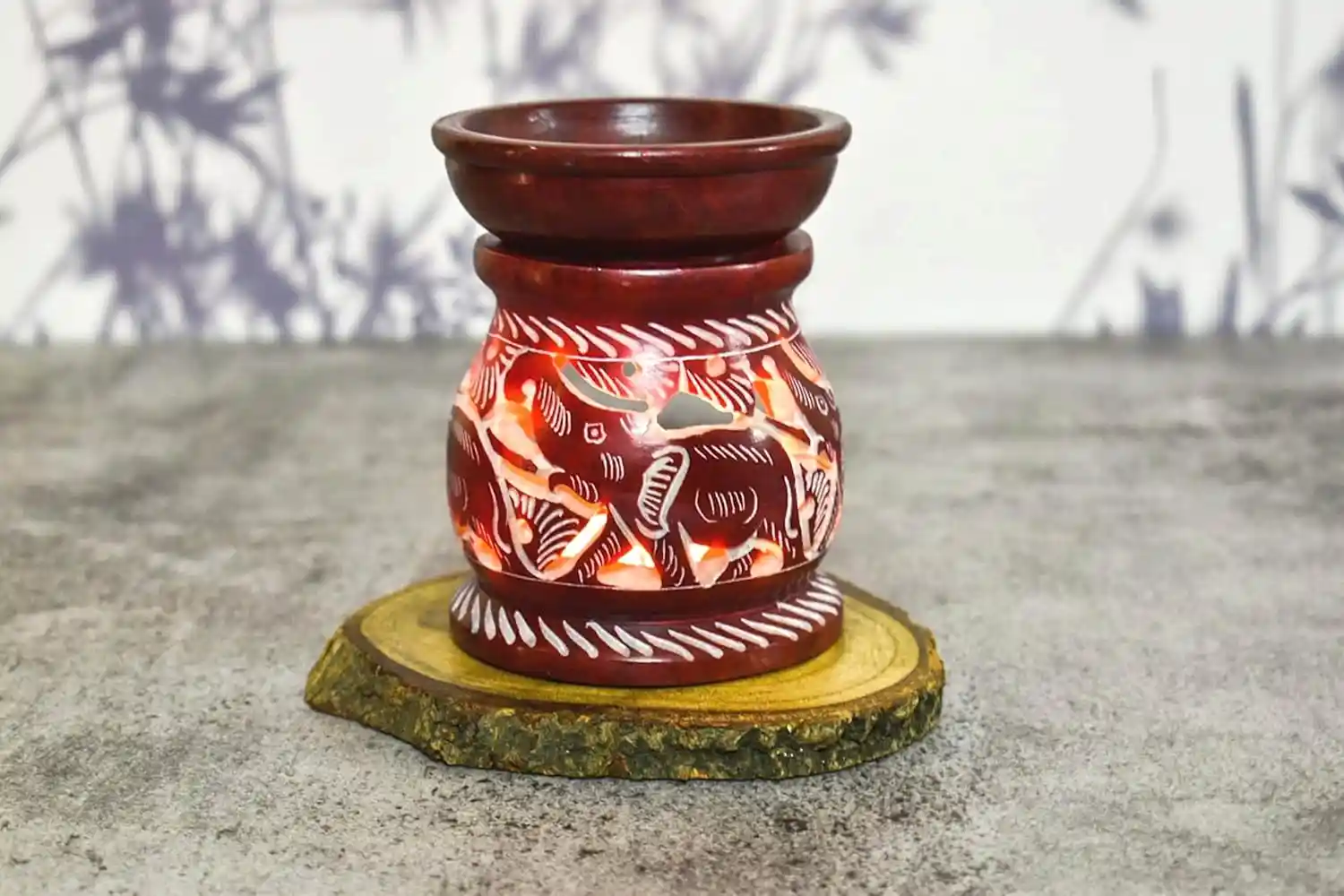
Product Overview & Features
A compact stone-based diffuser, often carved from soapstone. It includes a bowl for oils and warms them to diffuse scent gently.
Benefits & Use in Spa Design
Because it’s carved from natural stone, it visually and materially aligns with biophilic palettes. It emits a gentle aroma without mechanical noise, ideal for intimate zones like facial rooms or quiet corners.
Use Case & Problem Solved
In sensitive treatment rooms where ultrasonic noise or movement is unwelcome, this passive diffuser offers scent without electric hum. It solves the problem of fragrance without machinery.
How to Buy & Where
Find it via natural product or artisanal stoneware suppliers.
Buy Now – Soapstone Oil Aroma Diffuser
Use Cases: How These Products Solve Real Problems
Treatment Rooms & Private Suites
In treatment rooms, clients need immersion and calm without distraction. The PAI Wellness Aroma Diffuser or Soapstone Aroma Diffuser can deliver a subtle fragrance layer. Soft, low-level circadian lighting complements ambient tones. Natural materials like wood paneling, moss accents, or stone surfaces complete the sensory profile. These elements help therapists work in a calm environment, and clients relax more deeply.
Relaxation Lounges & Waiting Areas
Lounge zones are transitional spaces where clients settle into spa mode. Here, the Geohoney Himalayan Salt Lamp provides warm ambient light. The Di Palomo Ultrasonic Diffuser can serve as a decorative object while infusing scent. Comfortable loungers, soft rugs, views of greenery, and water feature background sounds support the shift in mindset from outside life to inner wellness.
Yoga / Meditation Rooms
For movement or stillness practices, Terpenic Diffuser Pulse gives control over scent release intensity. It can be scheduled to intensify scent before a session and taper off afterward. Clean floor space with views to plant walls or gardens reinforces a nature connection. Acoustic material ensures calmness, and modulated lighting supports focus.
Circulation Corridors & Green Breezeways
Corridors or transition halls can incorporate vertical gardens, indoor planters, or moss walls. Embedded diffusers along the path gently scent the air as clients pass. Lighting variations guide path flow, and natural textures underfoot (e.g., pebbles, cork) maintain sensory continuity.
Step-by-Step: How to Buy & Where
-
Choose product categories – diffusers, lamps, stone diffusers, etc.
-
Select vendors – wellness e-commerce sites, spa equipment suppliers, or local artisan studios
-
Order sample units to verify aesthetics, scent strength, and integration
-
Scale orders for your spa or client projects
Implementation Tips & Best Practices
-
Start with the sensory wave: plan sight – sound – scent – touch layering.
-
Test scent intensity in the room before scaling. Too much aroma can be overwhelming.
-
Sequence installations: begin with structural biophilic elements (plants, materials) before adding tech devices.
-
Maintain devices – diffusers need cleaning, lamps may gather dust, and plants require care.
-
Coordinate lighting and scent schedules (e.g., diffusers turn on 10 minutes before opening).
-
Train staff to understand subtle ambiance – scent reset, turning devices on/off, client sensitivities.
-
Document client feedback – ambiance is subjective, allow adjustments.
Frequently Asked Questions
Q1: Will clients with fragrance sensitivities be bothered by these diffusers?
Yes, that’s possible. Best practice: choose gentle, low-concentration essential oil blends and provide fragrance-free zones. Use diffusers with scheduling so scent cycles on/off. Always offer a clear path and ventilation.
Q2: How much budget should be allocated for ambiance devices in a spa build?
Depending on scale and quality, allocate 1%–3% the overall interior budget for scent systems, ambient lighting, and natural materials. For a 200 m² spa, it could range from a few hundred to several thousand USD.
Q3: Do these products require complicated installation?
Not typically. Most aroma diffusers and lamps are plug-and-play. More advanced systems (integrated HVAC scent distribution or circadian lighting) may require wiring or low-voltage control systems. For those, collaborate with electrical/automation contractors.
